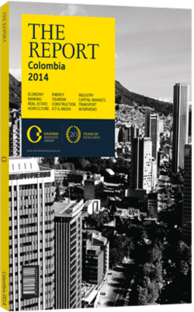OBG talks to Juan Camilo Quintero, Executive Director, Ruta N

Interview: Juan Camilo Quintero
In what ways can stimulating technology-based businesses increase economic competitiveness?
JUAN CAMILO QUINTERO: A major concern over the past decade has been that the country is suffering from low levels of productivity, which is damaging overall economic performance. To address these issues, Colombia has focused on innovation as a means of improving competitiveness and productivity by further promoting education and positioning itself as a knowledge-based economy. Following this logic, we have moved forward to open space for innovative, technology-based businesses.
However, while these steps have improved competitiveness and produced positive results, further stimuli must be provided to businesses that are based on technology. After all, other countries in the region are also investing in their own economies, generating further competition for Colombia.
To what extent is a lack of available human talent slowing potential company growth?
QUINTERO: The issue of human talent is highly relative. Technology is changing at an incredibly fast pace and some companies have not properly understood the need to innovate their programmes to accommodate the demands of the labour market. The largest problem remains a lack of bilingualism among workers.
However, it is also worth noting that in the existing economic environment, insufficient priority is placed on careers focused on innovation and students are not willing to take the risk entailed in choosing these careers. As a result, it is necessary to demonstrate to engineers that they can also be businessmen and entrepreneurs.
What steps could be taken to prevent small and medium-sized enterprises (SMEs) being squeezed out of the market by multinational companies?
QUINTERO: Options are available for companies of all sizes and these ultimately depend on the individual strategy of each company. For example, owing to the country’s mountainous geographical terrain, many logistics and production companies are migrating to the coast to be closer to port facilities. SMEs must find their core competences and technologies to understand where can they focus their growth potential and even win out over multinationals in specific niches.
How can finance mechanisms be made more flexible to encourage private companies?
QUINTERO: We have a different experience from developed countries when it comes to investment in technological development and private sector innovation. In Colombia, 70% of investment in these areas emanates from the public sector and only 30% is from the private sector. Only a small number of companies are undertaking research activities and managing innovation. While the national government is making major efforts, these have not been sufficient. For example, Colombia today invests 0.18% of its GDP in research and innovation, which is a low proportion when compared to smallAs a result, Colombia’s economy has not yet been able to take off with a dynamic productive sector that generates knowledge. It is expected that the various free trade agreements that have been signed in recent years will generate a stimulus benefitting not only entrepreneurs but also financial entities. We want to encourage financial entities to create softer lines of credit for equipment replacement as well as to prioritise the Therefore, in order to encourage growth within the private sector, more emphasis needs to be placed on a cultural campaign in innovation, the arrival of more competition and softer lines of credit focused on innovation development. The national government has proposed helpful strategies to improve the state of science, technology and innovation. However, many problems remain at the level of regulation and bureaucracy, as the government is not adapting as fast as it should and so is slowing down the system. It should understand that the dynamics of this sector have a particular speed.
You have reached the limit of premium articles you can view for free.
Choose from the options below to purchase print or digital editions of our Reports. You can also purchase a website subscription giving you unlimited access to all of our Reports online for 12 months.
If you have already purchased this Report or have a website subscription, please login to continue.

